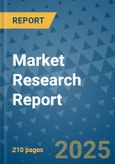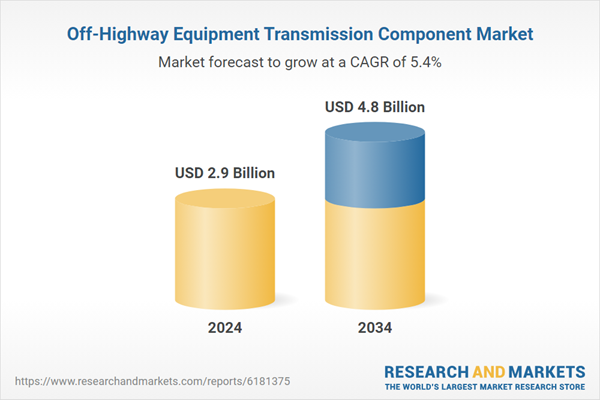The market growth is driven by increasing investments in infrastructure projects, including roads, bridges, and housing developments. These projects require construction equipment equipped with durable transmission systems capable of handling heavy loads for extended periods. The demand for off-highway machinery is also rising due to rapid urbanization, particularly in Asia and Africa. Moreover, the agriculture sector, especially in developing countries, is embracing mechanization, with advanced transmission systems becoming more common in tractors, harvesters, and sprayers. These systems, such as hydrostatic and electro-hydraulic transmissions, are gaining popularity because of their efficiency, precision, and ease of operation. Similarly, the mining industry continues to grow as demand for minerals and fossil fuels remains high, leading to greater reliance on robust transmission systems in heavy-duty machinery. Although the electrification of mining equipment is a growing trend, diesel-powered machinery still relies on durable transmissions to function efficiently in challenging environments.
The gears & gear systems segment accounted for a 31.6% share in 2024 and is expected to grow at a CAGR of 6.1% through 2034. This segment is benefiting from the increasing adoption of planetary gear sets, which provide compact, high-torque solutions that are more efficient, reliable, and space-efficient in off-highway machinery. The use of lightweight materials such as alloys and composites is also growing, helping to reduce overall weight while maintaining strength. Additionally, advancements in noise and vibration suppression technologies are being integrated into gear systems to improve both operator comfort and the longevity of machine parts.
The internal combustion engine (ICE) segment held an 81% share in 2024 and is expected to grow at a CAGR of 5.2% through 2034. Despite the growing trend toward electrification, ICEs are still preferred in off-highway applications due to their reliability and power. Manufacturers are focusing on improving fuel efficiency and reducing emissions to meet stringent environmental standards.
U.S. Off-Highway Equipment Transmission Component Market held 86.1% in 2024, with USD 728.9 million. The country’s rapid urbanization, growing disposable incomes, and increasing demand for premium vehicles are all contributing factors to this dominance. In the U.S., hydrostatic transmissions are becoming more widely used in off-highway machinery due to their flexibility, efficiency, and smooth power delivery. These systems are particularly beneficial in applications that require variable speed control, such as construction and agricultural machinery.
Key companies leading the Global Off-Highway Equipment Transmission Component Market include Allison Transmission, BorgWarner, Bosch Rexroth, Caterpillar, CNH Industrial, Eaton Corporation, John Deere, Komatsu, and ZF Friedrichshafen. To strengthen their position, companies in the Off-Highway Equipment Transmission Component Market are focusing on technological innovation and product diversification. Many are investing in the development of advanced transmission systems, such as hydrostatic and electro-hydraulic solutions, to improve the efficiency, durability, and energy performance of off-highway machinery. Companies are also forming strategic partnerships with OEMs to integrate their transmission technologies directly into new-generation off-highway equipment. Furthermore, these players are expanding their manufacturing capabilities, particularly in regions with growing infrastructure needs, like North America and Asia.
Comprehensive Market Analysis and Forecast
- Industry trends, key growth drivers, challenges, future opportunities, and regulatory landscape
- Competitive landscape with Porter’s Five Forces and PESTEL analysis
- Market size, segmentation, and regional forecasts
- In-depth company profiles, business strategies, financial insights, and SWOT analysis
This product will be delivered within 2-4 business days.
Table of Contents
Companies Mentioned
The companies profiled in this Off-Highway Equipment Transmission Component market report include:- ZF Friedrichshafen
- Allison Transmission
- Eaton
- Bosch Rexroth
- Parker Hannifin
- Caterpillar
- John Deere
- CNH Industrial
- BorgWarner
- Komatsu
- Volvo
- Liebherr
- Doosan
- Hitachi
- SANY
- XCMG
- JCB
- Carraro
- Twin Disc
- Bondioli & Pavesi
- Hydro-Gear
- Poclain
- Brevini
- Rexnord
Table Information
| Report Attribute | Details |
|---|---|
| No. of Pages | 210 |
| Published | October 2025 |
| Forecast Period | 2024 - 2034 |
| Estimated Market Value ( USD | $ 2.9 Billion |
| Forecasted Market Value ( USD | $ 4.8 Billion |
| Compound Annual Growth Rate | 5.4% |
| Regions Covered | Global |
| No. of Companies Mentioned | 25 |









